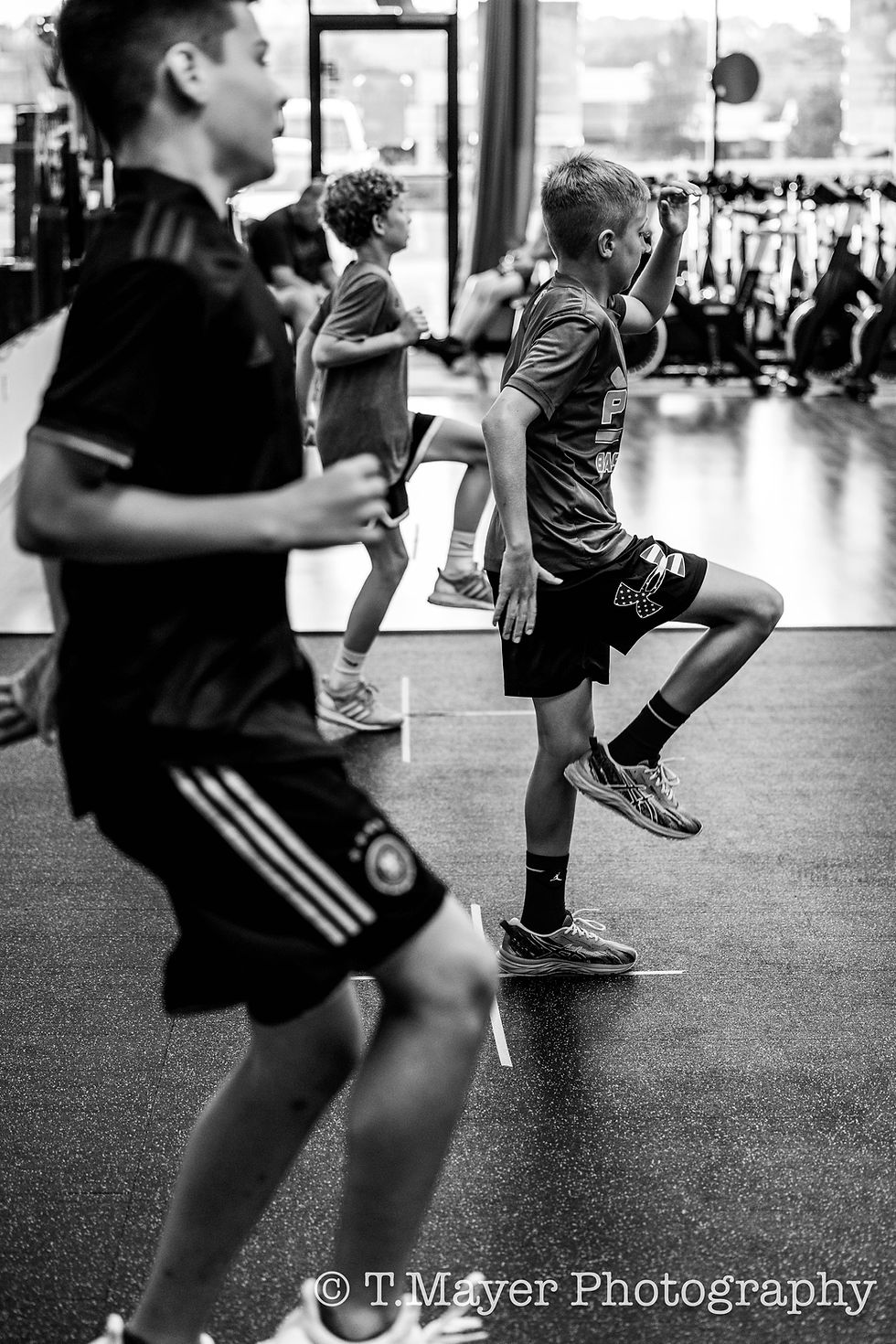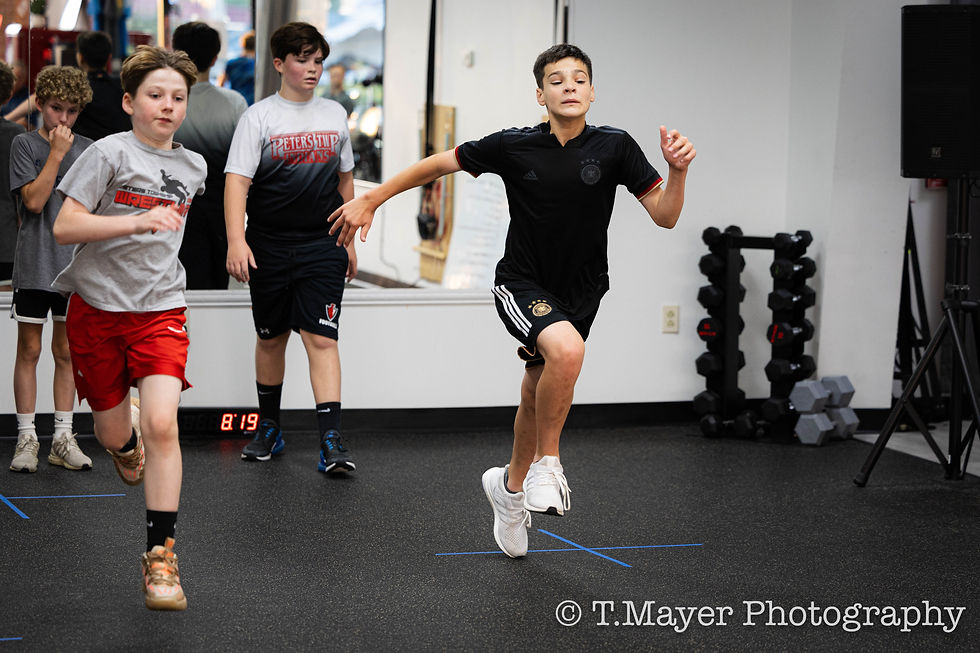"Maximizing Speed and Agility: The Foot and Ankle's Role in Athlete Performance"
- Laura Baden
- Jun 25, 2024
- 3 min read
Unlocking Speed: The Crucial Role of the Foot and Ankle
As a sports performance coach, I'm always on the lookout for ways to help athletes reach their full potential. Today, I want to delve into a crucial yet often overlooked aspect of athletic performance: The foot and ankle. Specifically, we'll explore how enhancing abilities of the foot and ankle can directly impact speed on the field, track, or court.

Ankle Range of Motion: The Foundation of Mobility
An athlete's ability to generate speed often hinges on their ankle's range of motion. Research by Hrysomallis (2007) highlights that optimal ankle dorsiflexion is crucial for effective stride length and ground contact time during running. When the ankle joint can move through its full range of motion efficiently, athletes can achieve longer strides and maintain proper form throughout their movements. This not only enhances speed but also reduces the risk of injury by ensuring balanced force distribution.
Intrinsic Foot Strength: The Unsung Hero
The intrinsic muscles of the foot play a pivotal role in maintaining stability and transferring forces during athletic movements. Studies such as that by McKeon et al. (2015) underscore the importance of these muscles in enhancing proprioception and overall foot function. Strengthening these muscles through targeted exercises like toe curls, marble pickups, and barefoot training not only improves balance and agility but also contributes to better force absorption and propulsion, crucial for explosive movements during sprinting and cutting maneuvers.

Foot and Ankle Stiffness: Finding the Optimal Balance
Contrary to common belief, a certain level of stiffness in the foot and ankle complex is beneficial for speed. According to research by Morin et al. (2011), a moderately stiff ankle joint can act as a spring, storing and releasing elastic energy efficiently during each stride. This elastic recoil mechanism translates into greater force production and enhanced stride efficiency. However, excessive stiffness can limit mobility and increase injury risk, emphasizing the need for a balanced approach to stiffness training through appropriate exercises and flexibility routines.
Force Production: Turning Strength into Speed
At the core of speed development lies the ability to generate and apply force effectively. Strong foot and ankle muscles, including the calves, tibialis anterior, and intrinsic foot muscles, contribute significantly to this force production. Studies by Kubo et al. (2000) demonstrate that strength training focusing on these muscle groups can lead to improved sprint performance by enhancing the muscle's ability to produce force rapidly. Incorporating exercises to target these muscles and using specialized plyometric drills can help athletes harness this force production potential, translating strength gains into increased speed.
Conclusion: Elevate Your Speed with Strategic Training

In conclusion, enhancing foot and ankle strength is not just about injury prevention; it's about unlocking your true speed potential. By improving ankle range of motion, developing intrinsic foot strength, optimizing foot and ankle stiffness, and boosting force production, athletes can take their performance to the next level. A well-rounded training program that includes mobility drills, strength exercises, and plyometrics tailored to these areas will lay the foundation for faster sprint times, sharper cuts, and overall agility on the field.
Remember, speed is not just about genetics—it's about smart, targeted training that maximizes every aspect of your athletic potential. So, lace up those shoes, hit the gym, and watch your speed soar!
References:
Hrysomallis, C. (2007). Relationship between balance ability, training and sports injury risk. Sports Medicine, 37(6), 547-556.
McKeon, P. O., et al. (2015). The foot core system: a new paradigm for understanding intrinsic foot muscle function. British Journal of Sports Medicine, 49(5), 290-290.
Morin, J. B., et al. (2011). Mechanical determinants of 100-m sprint running performance. European Journal of Applied Physiology, 112(11), 3921-3930.
Kubo, K., et al. (2000). Relationship between elastic properties of tendon structures and performance in long distance runners. European Journal of Applied Physiology, 83(6), 492-498.




Comments